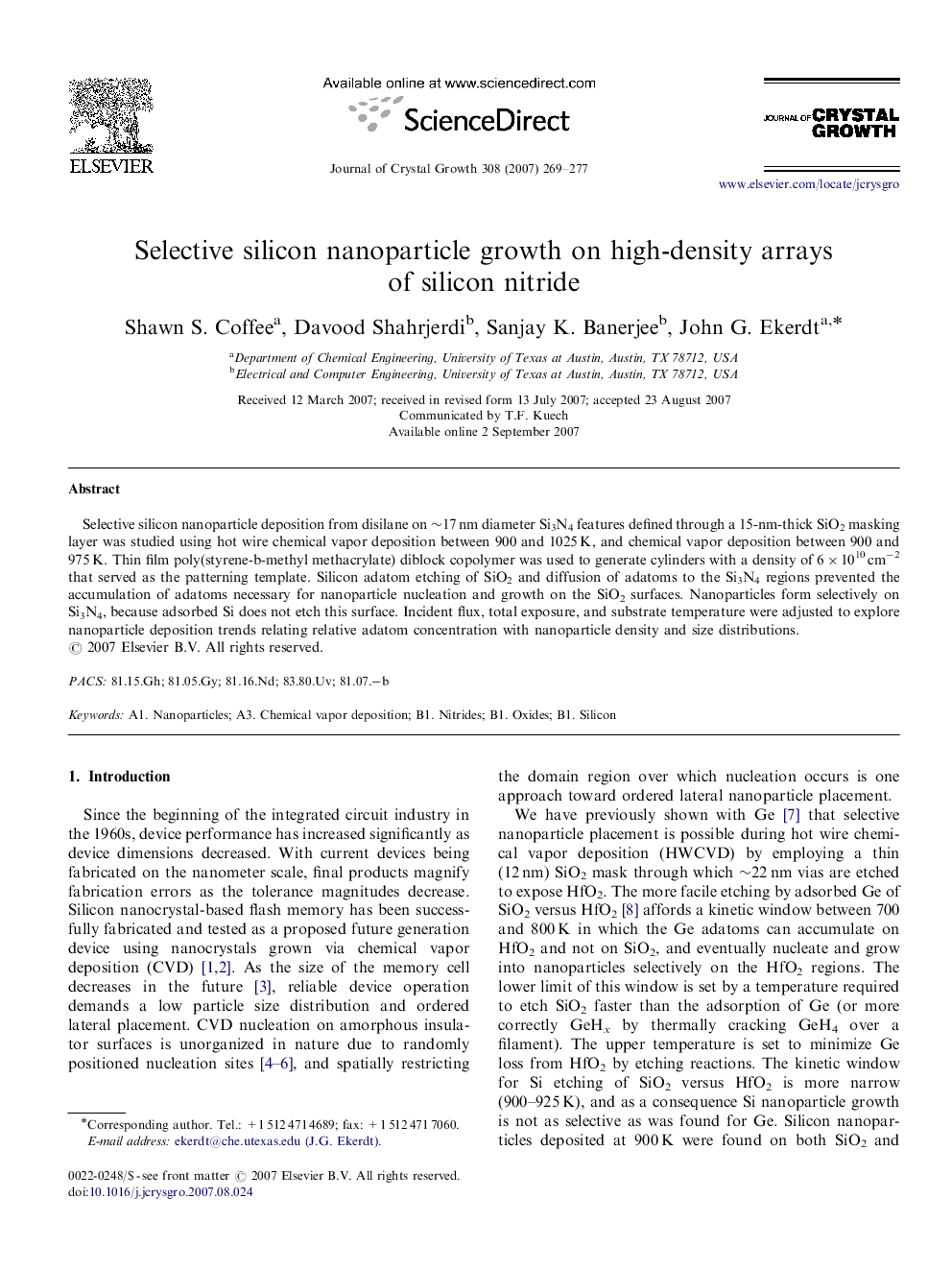| Article ID | Journal | Published Year | Pages | File Type |
|---|---|---|---|---|
| 1794695 | Journal of Crystal Growth | 2007 | 9 Pages |
Abstract
Selective silicon nanoparticle deposition from disilane on â¼17Â nm diameter Si3N4 features defined through a 15-nm-thick SiO2 masking layer was studied using hot wire chemical vapor deposition between 900 and 1025Â K, and chemical vapor deposition between 900 and 975Â K. Thin film poly(styrene-b-methyl methacrylate) diblock copolymer was used to generate cylinders with a density of 6Ã1010Â cmâ2 that served as the patterning template. Silicon adatom etching of SiO2 and diffusion of adatoms to the Si3N4 regions prevented the accumulation of adatoms necessary for nanoparticle nucleation and growth on the SiO2 surfaces. Nanoparticles form selectively on Si3N4, because adsorbed Si does not etch this surface. Incident flux, total exposure, and substrate temperature were adjusted to explore nanoparticle deposition trends relating relative adatom concentration with nanoparticle density and size distributions.
Keywords
Related Topics
Physical Sciences and Engineering
Physics and Astronomy
Condensed Matter Physics
Authors
Shawn S. Coffee, Davood Shahrjerdi, Sanjay K. Banerjee, John G. Ekerdt,
